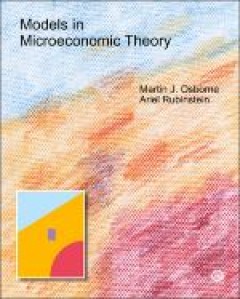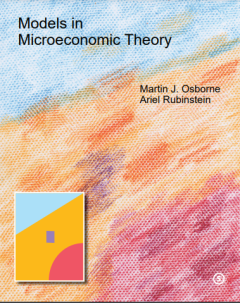Filter by

Models in microeconomic theory
Models in Microeconomic Theory covers basic models in current microeconomic theory. Part I (Chapters 1-7) presents models of an economic agent, discussing abstract models of preferences, choice, and decision making under uncertainty, before turning to models of the consumer, the producer, and monopoly. Part II (Chapters 8-14) introduces the concept of equilibrium, beginning, unconventionally, w…
- Edition
- -
- ISBN/ISSN
- 9781783749225
- Collation
- xv, 341p. : ill.
- Series Title
- -
- Call Number
- 338.5 OSB m

Models in microeconomic theory
There are many adjectives that one could reasonably use to describe the new open-access textbook, 'Models in Microeconomic Theory' by Martin Osborne and Ariel Rubinstein—terse, rigorous, deep and technically demanding, among them. But to me, the word that best describes their effort is ‘honest’. — Rajiv Sethi, Barnard College, Columbia University, Studies in Microeconomics 9(1) 128�…
- Edition
- -
- ISBN/ISSN
- 9781783748945
- Collation
- xv, 341 p. ; ill
- Series Title
- -
- Call Number
- 338.5 OSB m

Innovations in quantitative risk management
Quantitative models are omnipresent –but often controversially discussed– in todays risk management practice. New regulations, innovative financial products, and advances in valuation techniques provide a continuous flow of challenging problems for financial engineers and risk managers alike. Designing a sound stochastic model requires finding a careful balance between parsimonious mode…
- Edition
- -
- ISBN/ISSN
- 9783319091143
- Collation
- xi, 438p.: ill.
- Series Title
- -
- Call Number
- 658.155 INN i
 Computer Science, Information & General Works
Computer Science, Information & General Works  Philosophy & Psychology
Philosophy & Psychology  Religion
Religion  Social Sciences
Social Sciences  Language
Language  Pure Science
Pure Science  Applied Sciences
Applied Sciences  Art & Recreation
Art & Recreation  Literature
Literature  History & Geography
History & Geography